Christopher Miller, MBA | Specialized Wealth Management
Originally Appeared in Apartment Management Magazine
Like many real estate investors, I got my personal start as a landlord in single family residential (SFR) homes and condos. Several years ago, I realized that I had “outgrown” SFR investments and could create much more cash flow potential with “more advanced” real estate investments. Could this work for you, too? This month we’ll take a look at it.
Single Family Residential Properties Typically Cash Flow Less Than Multiple Units As A Percentage Of Equity
It is obvious that a single-family home would cash flow less than a property with multiple units, but many investors don’t realize that their percentage return on equity can be quite a bit less as well. As an example, let’s use a property purchased back in 2003 – a typical California “first house:” 3 bedrooms, 2 baths, and about 1,250 square feet, and you bought it for $225,000 with 20% down and a 4.25% interest rate. (You were smart enough to choose a fixed interest rate back when adjustable rates were very popular.) You refinanced this loan in 2021 to take advantage of a 3% rate, and you now owe about $96,000 with a $421 monthly payment. You have this property rented for $3,000 per month – for $36,000 of annual rent.
Is this good cash flow? To answer this question, we’ll calculate our return on equity. First, we’ll need to estimate what the home is worth today. A good estimate for today’s value is an $800,000 sales price for this property. Our hypothetical investor therefore has ($800,000 – $96,000 mortgage =) $704,000 of equity in this house.
Next, let’s calculate our net income after expenses. Our property taxes, based on our 2003 purchase price, are $4,000 annually. Homeowner’s insurance is $1,300 per year. Let’s say you had a good year and only experienced $500 of expenses that year, and your annual loan payments total $5,052. This gives us total annual expenses of $10,852 for a net income of ($36,000 – $10,852) $25,148.
$25,000 of annual income from a $225,000 house that you put $45,000 down on sounds pretty good, right? Not necessarily – this is why it is important to do all the math. What is my return on equity based on the property’s current value? That $25,158 of annual income represents a 3.5% annual return on your $704,000 of equity ($25,158 / $704,000 = 3.5%). If the house was paid off, with no mortgage, we would have $30,200 of annual income. That divided by the home’s value ($800,000) gives us a 3.75% annual return – not much better.
The Good News Is That Cash Flow Is Poor Because The Value Is High
Why do single family residences tend to have lower cash flow? The answer is really a good thing for SFR rental owners – their value is comparably higher than investment properties. (Apartment buildings.) This is because investment properties are valued solely on the income they produce. The value of a 4-unit property is capped by economics – a buyer needs to make a certain amount of cash flow on a property, and this limits the amount of money he can spend to purchase it. Single family homes, on the other hand, are worth whatever someone is willing to pay for it. If the house is close to desirable amenities, is in a good school district, is in an attractive area with a low number of homes – this can all drive the price higher.
I sold my last single-family rental (the house my wife and I moved into when we got married) a few years ago. I never really liked this house due to its location (close to a freeway and very noisy). When we listed it for sale, a dozen bids flooded in. Half of these offers were at least $100,000 over our listing price and were placed by potential buyers who had lost “bidding wars” on many previous homes and didn’t want to “miss out” again. I’m still pinching myself over the huge sales price we received: Things like this don’t happen with investment properties.
Apply The Principle Of Compound Interest To Your Rising Rents
Real Estate owners are using the principle of compounding interest when they raise their rents every year. One rule of compounding interest is that a larger number can grow much faster than a smaller one. For example: Let’s look at an investment duplex in Orange County that recently sold for just under $950,000. The market rental rate for each unit is $2,800 for a total rent of $5,600 / mo. In that neighborhood, a 3 BR/2 BA house will cost about the same amount of money, and I’d consider myself lucky if I could collect $4,000 / month from a good tenant. If we are able to raise rent 3% per year, that $4,000 per month today will be $5,375 / mo. in 2033. The duplex’s $5,600 / mo. becomes $7,525 if we can raise rents at the same rate.
For the same purchase price, we can collect $19,200 more annual rent by purchasing that duplex rather than the SFR property. 10 years from now, we’ll be collecting $25,800 more rent – the gap has widened by 35%!
Although these are gross numbers, before expenses, and we can probably expect the duplex to have slightly higher expenses than the SFR, the difference between those expenses is unlikely to be greater than the $1,600 of additional monthly rent we are collecting.
Growing Beyond Single Family Residential
Selling your SFR rentals and exchanging into multiple unit properties can be a great way to grow your investment portfolio to the “next level.” Most of us are buying investment real estate in search of cash flow, and multiple units can grow your cash flow over the years in ways that single family rentals can not. If you have children, (as I do), or grandchildren to put through college in the future, you dream of buying a second home out of California, (a very popular sentiment these days) or you are seeking healthy cash flow to allow for your retirement in the near future – exchanging those SFR properties for multiple units could be a way to achieve these goals.
The Potential For More Units With The Potential For Less Work
Most of my clients are looking to uncomplicate their lives and retire from the active management of real estate. Indeed – I sold the single-family house I mentioned above in search of higher rents and higher cash flow, and because I was ready to “retire” from the job of managing that particular property. I 1031 Exchanged into a multi-unit property with potentially more work for a still greater potential reward in the future – but this isn’t what my customers are looking for.
For over 20 years, I have helped investors complete 1031 Exchanges into partial interests of larger, institutional-grade properties such as 300-unit apartment complexes in growing metropolitan areas, or Triple-Net-Leased buildings featuring long term leases to credit tenants. These properties offer investors the potential to earn more income from less work – by using 1031 Exchanges and applying compound interest to already-larger gross rent collections.
Could You Benefit From Growing Your Sfr Rentals To The Next Level?
Because prices for Single Family Residences remain relatively high with low inventory levels, there are a lot of buyers out there chasing deals and willing to pay relatively high prices. Could we improve your cash flow potential by selling your existing property(ies) and exchanging for something bigger? Call my office toll-free at (877) 313-1868 and let’s discuss it.

